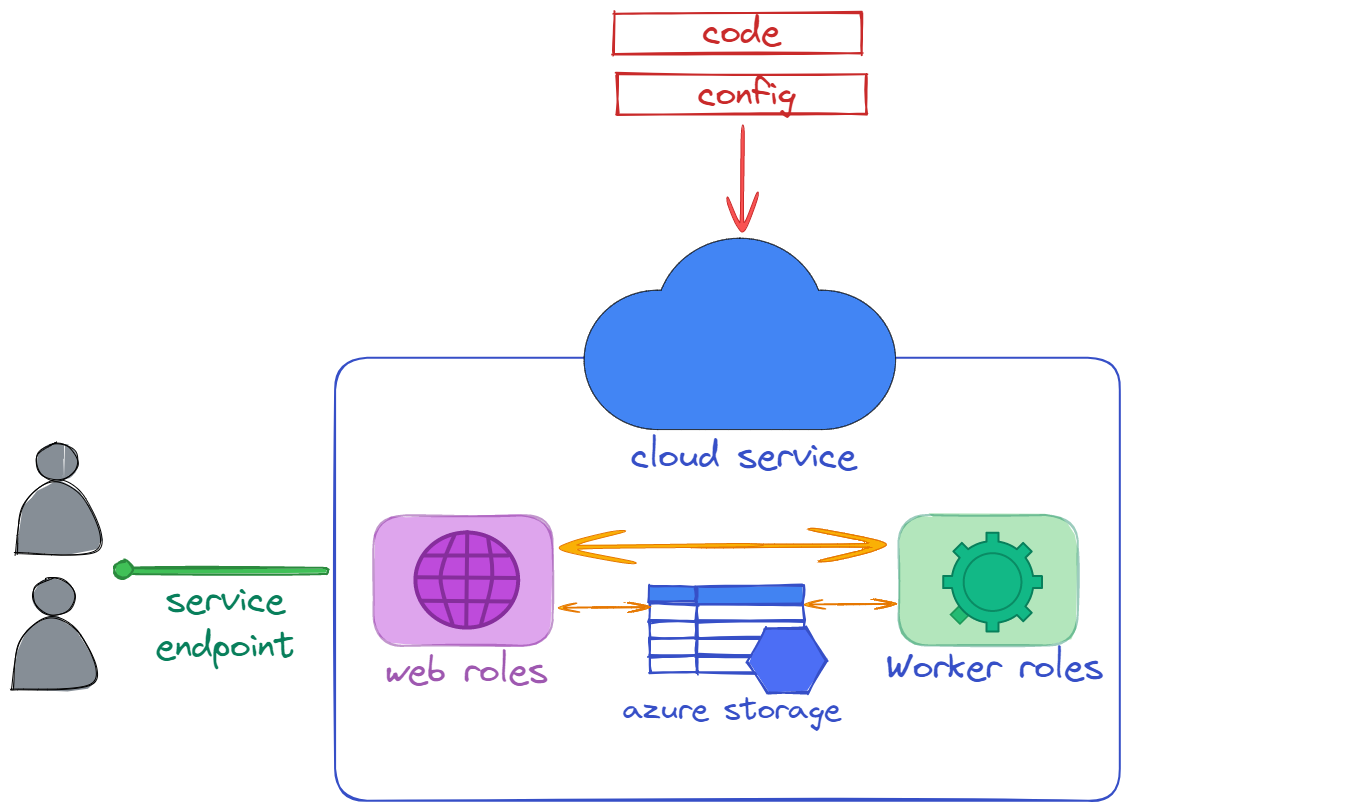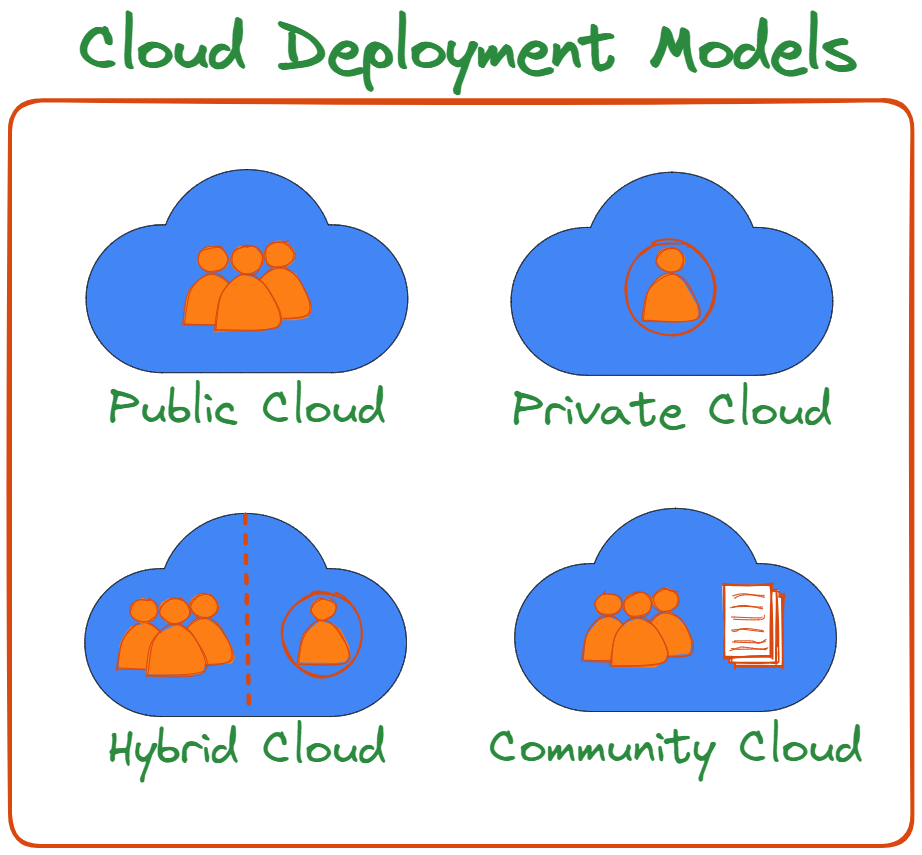Azure Interview Questions
Introduction
Azure is a cloud computing platform headed by Microsoft that offers a large spectrum of services ranging from storage to analytics and networking.
But, what is cloud computing first of all?
Well, to put it simply, cloud computing is the use of technological resources to store, retrieve, and process data via the internet in order to enhance speed, availability, scalability, and lower costs, and cloud service providers are companies that make these resources available to customers.
Microsoft Azure is the second-largest market share in the United States, with around 80% of Fortune 500 companies using the service for hosting their apps, resources, and other computing needs. Azure supports a variety of programming languages, including Java, C#, NodeJS, etc., and offers more than 200 services for cloud computing.
So, as you might have guessed already, cloud computing has gained a lot of popularity throughout the last few years, and is here to stay. So, buckle up and get ready to ace that Azure job interview with the article that covers some of the most important questions you should focus on, along with their answers. Let’s start right away!
Explain briefly what is Azure Cloud Service.
Azure Cloud Service is a Platform as a Service (PaaS) cloud computing model that is hosted on Virtual Machines (VMs). Azure assists applications that need high levels of scalability, stability, and availability while yet operating at a low cost. By setting up a cloud service instance, Azure cloud services are used to deploy multi-tier web-based applications on Azure.

There exist two types of Azure roles which differ in the way they are hosted on the VMs:
- Web Role: host and deploy the app over Internet Information Services (IIS) automatically,
- Worker Role: execute the app without using IIS.
How many different cloud deployment models exist? Explain them briefly.
Models of cloud deployment provide information about the ownership and location of the servers you're using. The four cloud deployment models are as follows:
- Public Cloud: This kind of cloud deployment architecture gives access to all customers to utilize any type of computer resource they may need, ranging from OS, CPU, and memory to application servers and databases.
- Private Cloud: A private cloud is often utilized by a single organization and managed by either the company itself to handle different user groups or a service provider that handles it either on-site or off-site. In general, private clouds are more expensive than public ones.
- Hybrid Cloud: A hybrid cloud uses both private and public cloud infrastructure and is most commonly used when the company needs to quickly scale up its IT infrastructure.
- Community Cloud: A community cloud model facilitates many organizations that are a member of a community sharing computer resources, such as colleges that work together in certain research fields or police forces that share computing resources within a county or state. Members of the community are often the only ones with access to a community cloud environment.

Are you sure you're getting this? Click the correct answer from the options.
Imagine an online retailer that expects much higher demand during the holiday season and has to get more resources for a limited time period only. Which cloud deployment model would they use?
Click the option that best answers the question.
- Public
- Private
- Hybrid
- Community
What is PaaS?
PaaS, or Platform as a Service, is a development and deployment environment in the cloud that has the tools needed to produce everything from basic cloud-based apps to complex enterprise systems. Infrastructure, such as servers, storage, and networking, as well as middleware, programming tools, business intelligence (BI) services, database management systems, and other components, are all included in PaaS.

Build your intuition. Click the correct answer from the options.
Q2. What part of the web application lifecycle does PaaS support?
- Building
- Testing
- Deploying
- Managing
- Updating
- All of the above
Click the option that best answers the question.
- Building
- Testing
- Deploying
- Managing
- Updating
- All of the above
What are the advantages of Scaling in Azure?
Autoscaling, Azure’s useful scaling function, comes in useful for dealing with ever-changing demands in mobile services, virtual machines, cloud services, and websites.
Some of its benefits are:
- Enhances the performance of the application.
- It allows both scaling up and down, depending on the need.
- Provides scheduled scaling, based on time intervals.
- Very cost-efficient.
Compare Azure with AWS and Google Cloud
There exist multiple cloud services that dominate the market at the moment, among which, the most popular ones are Microsoft Azure, Amazon Web Services, and Google Cloud Platform. They both offer excellent services, but the most important differences are:

Let's test your knowledge. Is this statement true or false?
Azure is the biggest cloud provider in 2022.
Press true if you believe the statement is correct, or false otherwise.
What is Azure Cache for Redis?
Azure Cache for Redis is a high-performance, in-memory caching solution that is implemented as a service in an Azure data center by Azure Cache for Redis. It generally runs on one or more machines and enables scalable and secure architectures. It offers a caching service that may be used from any Azure application, regardless of whether the application is built as a cloud service, a website, or inside of an Azure virtual machine. One of the main benefits of this architecture is speed, so in order to ensure fast access, it actually keeps as much data as it can in memory. Moreover, client applications that have the required access key are able to share caches.
What are virtual machine scale sets in Azure?
Azure Virtual Machine Scale Sets enable the creation and management of a collection of load-balanced virtual machines. Depending on demands or scheduling, the number of VMs may drastically increase or decrease.
The following are the main advantages of scale sets:
- Multiple VMs are simple to create and maintain.
- Provides redundancy and better performances by distributing applications among several instances.
- Enables automated scaling of your application in response to changing resource demand.
What are availability sets?
An availability set is a logical collection of virtual machines (VMs) that enables Azure to comprehend how an application is designed to offer redundancy and availability. To build a highly available application and meet the 99.95 percent Azure SLA, it is safer to create two or more VMs inside an availability set. An availability set assigns an update domain and a fault domain to each VM.
Name the different data services offered by Azure.
There exist seven different data services offered by the Azure Storage platform:
- Azure Blob Storage
- Azure Table Storage
- Azure File Storage
- Azure Queue Storage
- Azure Disk Storage
- Azure Elastic SAN (preview)
- Azure NetApp File Storage (specialized storage)
What is Azure Blob Storage?
Azure Microsoft's cloud-based object storage solution is called Azure Blob Storage. This storage is mostly used for efficiently storing large volumes of unstructured data, i.e. data that doesn't follow a certain model or description such as text or binary data. Blob Storage is useful for delivering files or graphics directly to a browser, storing documents for shared access, video and audio streaming, updating log files, and archiving information for analysis by a service located on-site or on Azure.
Are you sure you're getting this? Is this statement true or false?
ASP.NET Applications cannot be deployed on Azure.
Press true if you believe the statement is correct, or false otherwise.
One Pager Cheat Sheet
- Microsoft Azure is a cloud computing platform offering a wide range of services with high availability, scalability, speed, and cost savings, used extensively by Fortune 500 companies.
- Azure Cloud Service is a
PaaScloud computing model that hostsVirtual Machinesand provides scalability, stability, and availability, with two roles -Web RoleandWorker Role- that handle deployment overIISor without. - There are four cloud deployment models,
Public Cloud,Private Cloud,Hybrid CloudandCommunity Cloud, to choose from depending on the ownership, location, and type of resources needed by an organization. - The Hybrid Cloud deployment model provides the most
flexibleandcost-effectivesolution for an online retailer that expects higher demand only during the holiday season, withprivate cloudresources for main operations andpublic cloudscale upduring peak periods. PaaS(Platform as a Service) is a cloud-based development and deployment environment that provides the infrastructure and tools necessary for producing simple and complex cloud apps.- PaaS provides a
cloud-basedenvironment to build, test, deploy, manage and update web applications, offering the necessary infrastructure, middleware, programming tools, BI services, and other components. - Scaling with
Azureprovides enhanced performance and cost-efficiency, with the flexibility to easily scale up and down according to need, and even schedule scaling at regular intervals. - Comparing Microsoft Azure,
Amazon Web Services, andGoogle Cloud Platform, the most important differences arise from their individual services. - AWS is currently the biggest cloud provider, with a 32% market share, while Microsoft Azure and Google Cloud trail behind with 24% and 21%, respectively, making it unlikely that Microsoft Azure will become the biggest cloud provider in 2022.
- Azure Cache for Redis is a high-performance, in-memory caching service implemented in Azure data centers which offers fast, secure, and scalable access to data for applications of all types.
Azure Virtual Machine Scale Setsprovide simple to create and maintain_multiple VMs with _redundancy and better performance and can auto-scale in response to resource demand.- Availability sets are
logical collections of VMsthat help Azure offer redundancy and availability, assigning each VM an update and fault domain to ensure a 99.95 percent service level agreement. - Azure provides seven
data services, includingAzure Blob Storage,Azure Table Storage,Azure File Storage,Azure Queue Storage,Azure Disk Storage,Azure Elastic SAN(preview) andAzure NetApp File Storage(specialized storage). - Azure Blob Storage is Microsoft's
cloud-basedobject storage solution for efficientlystoringlarge volumes ofunstructured data. - ASP.NET applications can be deployed to Azure using different techniques, such as
Azure App ServiceandAzure Virtual Machines.


